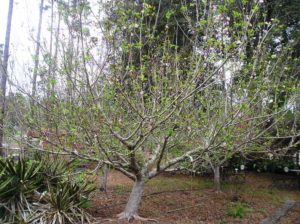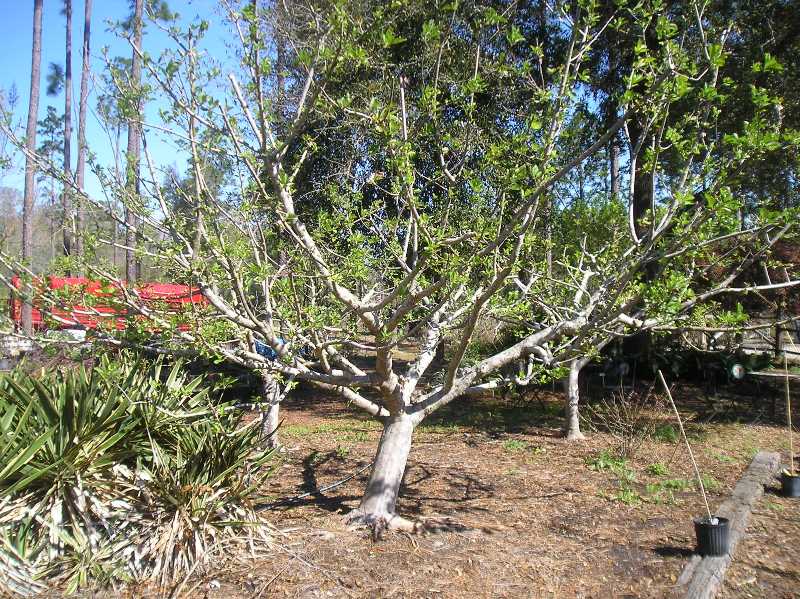[printfriendly]
Pruning Fruit Trees
It’s winter again, and the time for pruning fruit trees is at hand. Fruit tree pruning is not as difficult as most people think. Yes, it can be taken to the level of art, but the average backyard orchardist just wants to keep his trees healthy and productive, and low enough to allow for easy picking. If left un-pruned, all fruit trees will bear fruit, but the plants will become too tall to easily harvest, the fruit will be small and of reduced quality, and the trees will develop a habit of alternately bearing heavy crops one year and light crops the next. All of these problems can be overcome with a little training when plants are young and an annual pruning to keep them in shape.


Training is the first step to making productive, harvestable fruit trees. Apples and pears are trained to a modified central-leader system, as they are prone to fireblight. This system allows several leaders to develop, allowing infected limbs to be pruned out, without causing total loss of the canopy of the tree. Peaches, plums, and nectarines are trained to an open center system, to allow maximum sunlight into the center, promoting fruit growth. Grapes and kiwis are trained to grow on trellises or arbors. Bush fruits such as blackberries and blueberries are trained to grow in hedgerows to facilitate easy picking. Spend some time studying these various training systems, as they are the key to getting the most fruit from your plants. IFAS has a wonderful group of publications that explain these systems in detail. You can find them on the web at http://edis.ifas.ufl.edu/topic_fruit_and_nut_index
Although most fruits are pruned in late December or January, pruning can stimulate plants to break dormancy. A good rule of thumb is to begin the pruning season with the fruits that bloom later, including grapes, kiwis, persimmon, pear, and pecan, and save the earlier blooms, such as peach, plum, nectarine, apple, and figs for later. If tree height is a concern, consider doing some light summer pruning. It’s a great way to keep the height of fruit trees in check. Citrus trees are best pruned during the warm season; any time after fruit-set through July.
Some points to remember when pruning fruit trees:
– Get your training done early in the tree’s life. Most fruit trees settle down to bearing good crops by the third year. Major limb removal after this establishment period will delay production.
– Remove root-stock suckers. Most fruit trees are grafted; the first 6 to 10 inches of what sticks out of the ground is the root stock. If sprouts are allowed to grow from the root stock, they can quickly overtake and destroy the grafted part of your tree.
– Clean up the debris that is left from pruning. Burn it, or compost it well away from the orchard, as it can harbor disease and pests that will return to your trees. Also clean your tools (shears, pruners, loppers, and saws) between every tree, with Household bleach (ex: Clorox): 25% solution (1 part bleach + 3 parts water)  or Rubbing alcohol (70% isopropyl): 50% solution (1 part alcohol + 1 part water)Â
Finally, be brave. Many gardeners hesitate to prune as much as needed, fearful of harming their trees, vines, and brambles. But under-pruning can be as bas as over pruning. So study up: read the IFAS guides, attend a pruning class hosted by your county extension service, ask your local nursery for pointers, look for well-maintained plants in your neighborhood and ask the owner for advice. Once armed with information, arm yourself with clean, sharp tools, then get out there and do some pruning.

